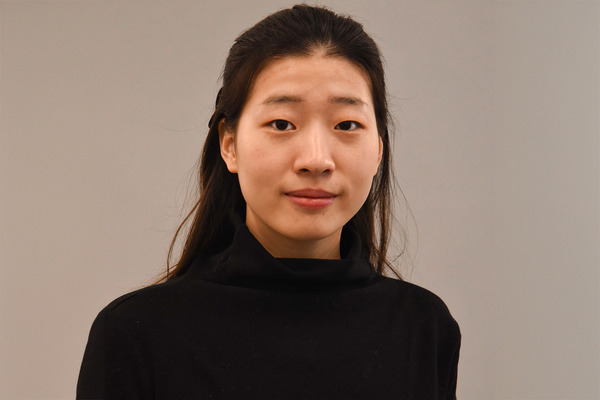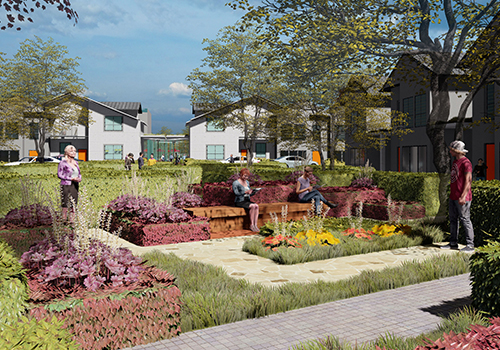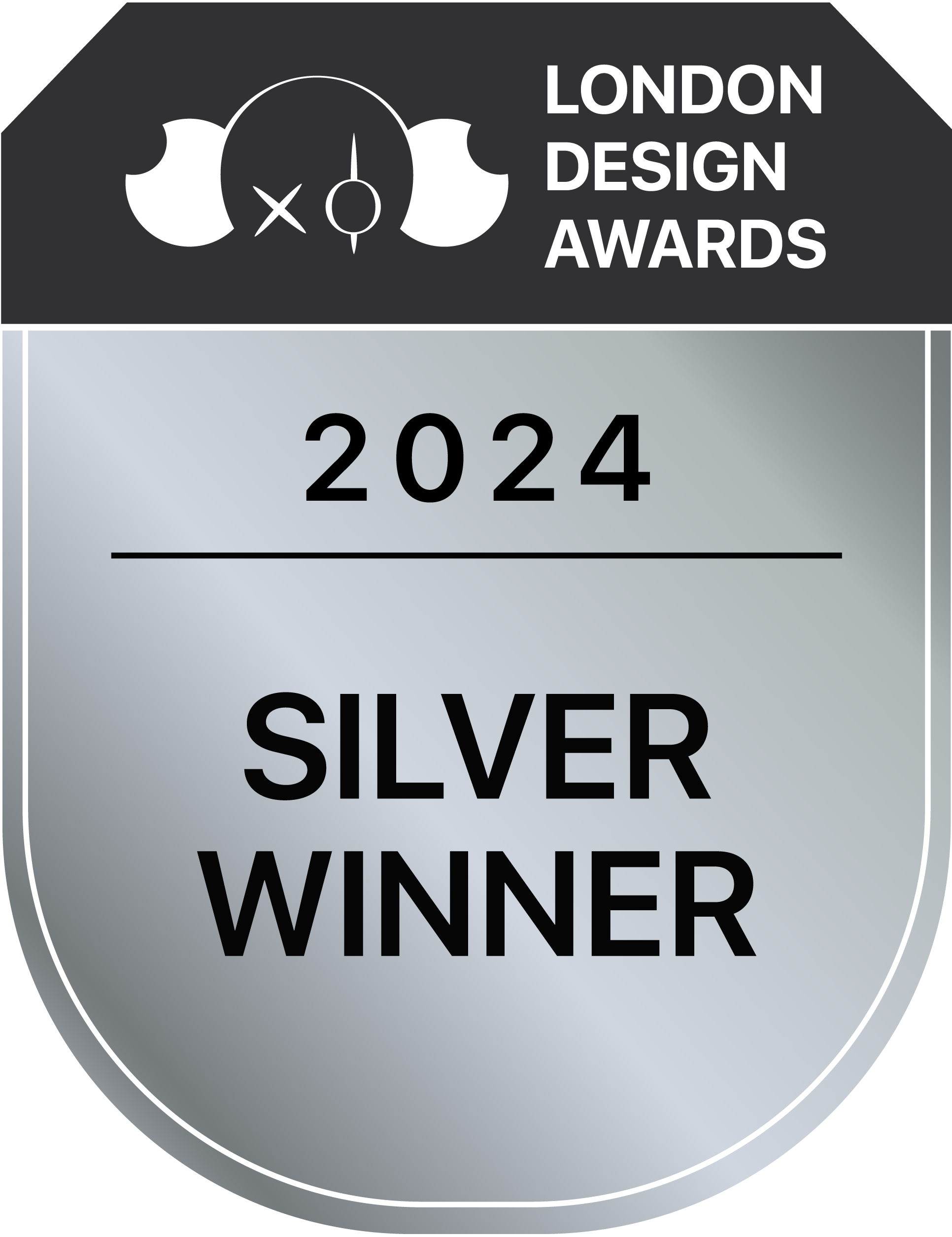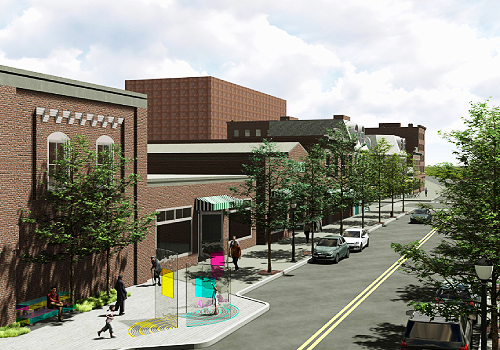
Yiru Zhang
1. Please give us a brief bio of yourself and your design background.
My name is Yiru Zhang, and I am a landscape architect and urban designer. I hold a Master of Landscape Architecture degree from Penn State University and a Master of Urban Design degree from the University of Michigan. I am a member of the American Society of Landscape Architects (ASLA), a SITES Accredited Professional, and a LEED Accredited Professional. My expertise is in sustainability and the environment, and I am dedicated to exploring the relationship between people and nature to inspire innovative design ideas.
2. What made you become/why did you choose to become a designer/artist?
I’ve always had a passion for aesthetics, drawing inspiration from observing daily life. This passion drives me to create innovative and sustainable designs that meet both aesthetic and functional goals. As a designer, I find immense fulfillment in transforming spaces to enhance the interaction between people and their environment.
3. Tell us more about your agency/company, job profile, and what you do.
I am a landscape designer currently working as a freelancer. I have previously worked in various landscape and architectural firms across the United States. My daily responsibilities include providing a supportive environment where innovative concepts can flourish, and encouraging collaboration and growth among team members. My focus is on delivering exceptional design solutions that reflect a commitment to excellence and creativity.
4. What does “design” mean to you?
To me, design is a journey of exploration and innovation. It involves constantly questioning the status quo and pushing the boundaries of what’s possible. Design is about envisioning a better future and taking deliberate steps to bring that vision to life. It’s a blend of art and science, where creativity meets functionality to create environments that are both inspiring and sustainable.
Every project begins with understanding the unique context and needs, followed by a deep dive into research and ideation. This process allows me to craft thoughtful and impactful solutions that harmonise aesthetics with practicality, enhancing the way people interact with and experience their surroundings. Design is my way of contributing to a more beautiful, equitable, and sustainable world.
5. What’s your favourite kind of design and why?
I favor designs that are functional and purposeful, enhancing people’s daily lives in meaningful ways. For example, when a landscape design encourages healthier lifestyles and motivates people to spend more time outdoors, it fulfills the true purpose of design and the environment around us. I believe that the best designs not only serve aesthetic and practical needs but also positively impact well-being and foster a deeper connection between individuals and their surroundings.
6. To you, what makes a “good” design?
A good design seamlessly fits into its environment and serves a clear purpose. It should feel natural and not appear out of place or forced. Additionally, it must be useful and resonate with the local culture and context. Good design harmonises with its surroundings, enhances functionality, and respects cultural and environmental nuances.
7. How did you come up with the idea for your award-winning design?
When I designed the project ‘Square Roots,’ I focused on creating a unique design language that could serve as a strong, unifying element throughout the site. My goal was to instill a sense of belonging, particularly in a residential neighborhood. By carefully considering the needs and experiences of the residents, I developed design elements that not only enhanced the aesthetic appeal but also fostered a deeper connection between the people and their environment.
8. What was your main source of inspiration for this design?
My main sources of inspiration come from my travels to several residential neighborhoods, such as the Village of Cross Keys and Greenbelt. These places provided valuable insights into how thoughtful design can create cohesive, vibrant communities, and these experiences heavily influenced my approach to creating engaging and harmonious spaces.
9. Do you think your country and its cultural heritage has an impact on your design process?
Yes, definitely. My country’s cultural heritage greatly influences my design process. I value creating spaces for people to gather and enjoy, focusing on inclusivity and community connection in every project.
10. Congratulations! As the winner of the London Design Awards, what does it mean to you and your company and team to receive this award distinction?
Thanks! I am honoured to receive the London Design Awards. This recognition not only validates my hard work but also motivates me to continue creating innovative and impactful projects. It inspires me to strive for excellence in all my future endeavours.
11. Can you explain a bit about the winning work you entered into the London Design Awards, and why you chose to enter this project?
My projects ‘Square Roots’ and ‘Tri-O’ both received awards. I chose to enter these projects because they showcase innovative strategies in public spaces, emphasising community engagement and environmental sustainability. Each project reflects my commitment to creating meaningful and transformative landscapes that enhance the user experience.
12. What were the main challenges you faced during the design process, and how did you overcome them?
The biggest challenge is designing a variety of gardens, from private to semi-public to public community centers, that cater to all residents' needs. This demands a deep understanding of garden space enclosures and the unique activities each space will host. For instance, private yards should offer quiet spaces for reading or stretching, with perennials, shrubs, and intimate seating areas for privacy.
Conversely, communal plazas for events like movie nights need open, flexible spaces to accommodate hundreds of people simultaneously. Balancing the intimacy and openness of these spaces is a significant challenge for this project.
13. How do you think winning this award will impact your future as a designer?
The impact is significant as winning this award will provide me with international recognition which will enhance my credibility as a designer. This opens up new opportunities for collaborations, and projects as well as encourages me to continue pushing the boundaries of creativity in my works.
14. What are your top three (3) favorite things about the design industry?
I love the close connection between design and people’s living spaces, which fosters a sense of belonging and community. The industry also encourages personal connections, allowing professionals to build meaningful relationships with clients and understand their unique needs.
Additionally, each project presents distinct challenges, inspiring strategic thinking and creativity, making every opportunity exciting for innovation and problem-solving. These aspects make the design industry incredibly rewarding and dynamic.
15. What sets your design apart from others in the same category?
My unique understanding of landscape architecture and urban design distinguishes my work. I focus on innovative approaches to space, form, and interactivity, creating designs that engage users and foster meaningful connections with the environment.
16. Where do you see the evolution of design industry going over the next 5-10 years?
While the rise of AI can automate repetitive tasks, design itself cannot be replaced due to its inherent complexity, the need for human empathy, and the richness of diverse cultures. I believe the industry will continue to evolve by integrating technology while prioritising creative, human-centered approaches.
17. What advice do you have for aspiring designers who want to create award-winning designs?
Pay close attention to your daily life and observe the often-overlooked details. Finding inspiration in the ordinary can lead to innovative ideas and meaningful designs that resonate with people and their environments.
18. What resources would you recommend to someone who wants to improve their skills in the design industry?
Don’t be afraid to share your work and seek feedback. Engaging with peers, attending workshops, and exploring online platforms can provide valuable insights and help you grow as a designer.
19. Tell us something you have never told anyone else.
Design shapes our lives, and life shapes design.
20. Who has inspired you in your life and why?
Jan Gehl, a Danish architect and urban designer has had a profound impact on me. His commitment to prioritising people is undoubtedly inspiring, and improving the relationship between the built environment and people's quality of life. His work has not only reshaped cities but also transformed the way we think about urban spaces, emphasising the importance of human-scale design and creating environments that enhance people's well-being and quality of life.
21. What is your key to success? Any parting words of wisdom?
Believing in what you can do, and that you will achieve it, sooner or later


